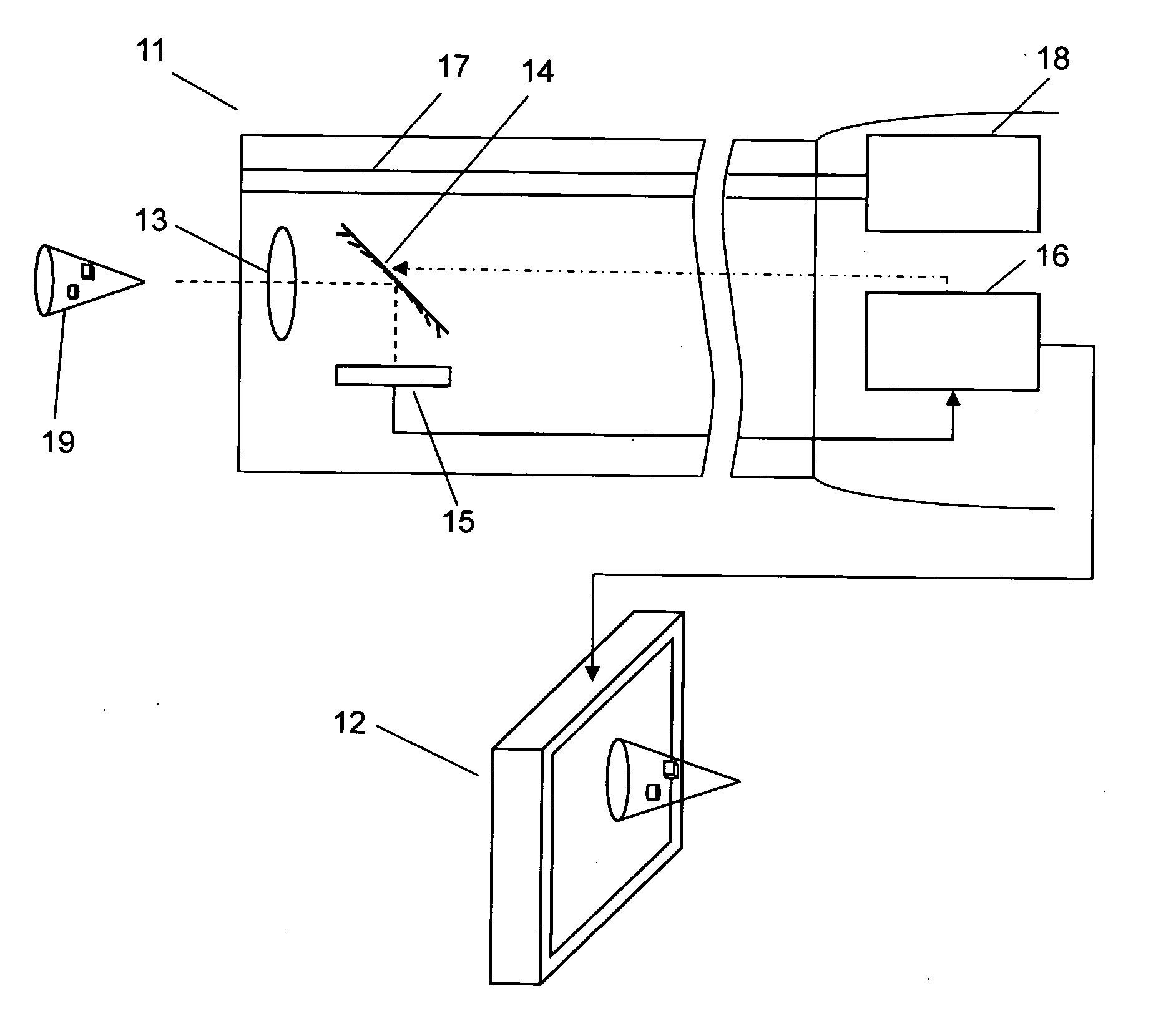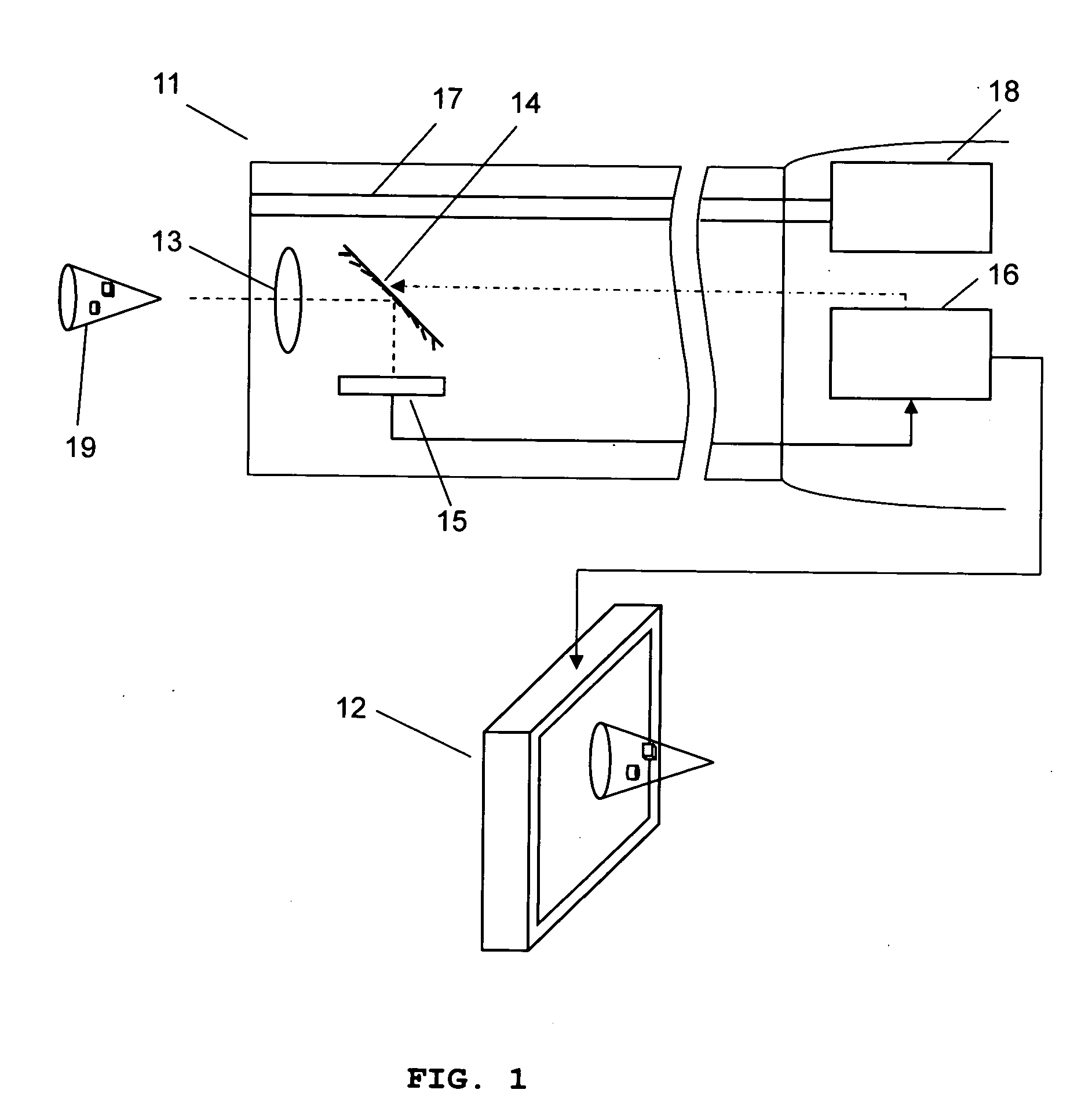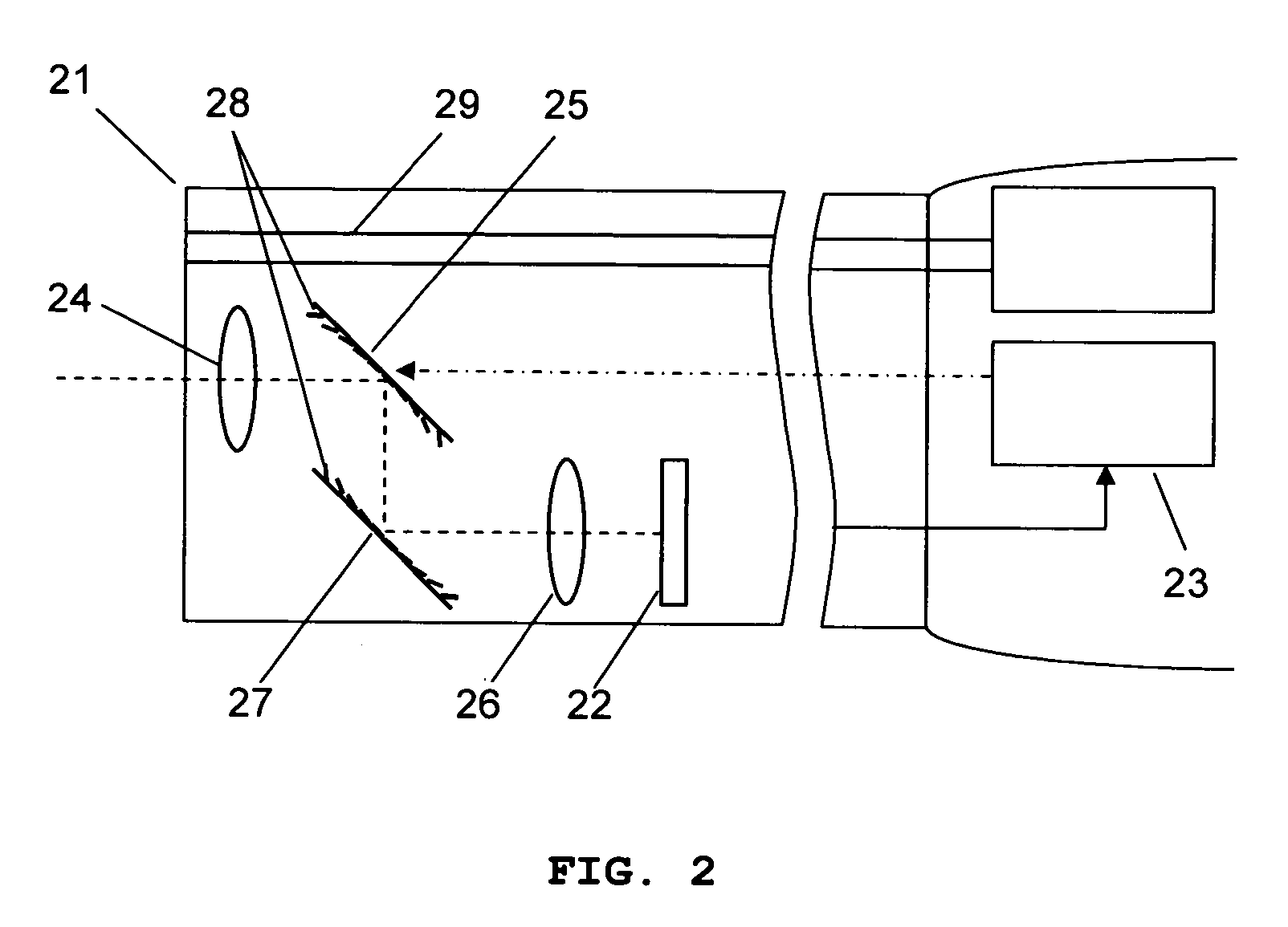Three-dimensional endoscope imaging and display system
a display system and endoscope technology, applied in the field of endoscope systems, can solve the problems of eye strain and fatigue, hardly achieved by monocular vision, and the need for special eyewear, so as to reduce unnecessary contact
- Summary
- Abstract
- Description
- Claims
- Application Information
AI Technical Summary
Benefits of technology
Problems solved by technology
Method used
Image
Examples
Embodiment Construction
[0046]FIG. 1 schematically illustrates an endoscope system with a variable optical axis according to the one embodiment of the present invention. The endoscope device comprises an endoscope imaging device 11 and a three-dimensional display device 12. The endoscope imaging device 11 comprises a lens system 13, 14, an imaging unit 15, and an image processing unit 16. The lens system includes an objective lens 13, and a variable focal length MMAL 14, optically coupled to the objective lens 13, configured to change the focal plane by changing the focal length of the MMAL 14. The light delivery system 17 with a light source 18 illuminates an object of interest 19. The imaging unit 15 receives two-dimensional images of an object 19 with different focal planes that are shifted by changing the focal length of the variable focal length MMAL 14. The image depth of the focal plane is obtained from the focal length of the variable focal length MMAL. The image processing unit 16 extracts substan...
PUM
 Login to View More
Login to View More Abstract
Description
Claims
Application Information
 Login to View More
Login to View More - R&D
- Intellectual Property
- Life Sciences
- Materials
- Tech Scout
- Unparalleled Data Quality
- Higher Quality Content
- 60% Fewer Hallucinations
Browse by: Latest US Patents, China's latest patents, Technical Efficacy Thesaurus, Application Domain, Technology Topic, Popular Technical Reports.
© 2025 PatSnap. All rights reserved.Legal|Privacy policy|Modern Slavery Act Transparency Statement|Sitemap|About US| Contact US: help@patsnap.com



